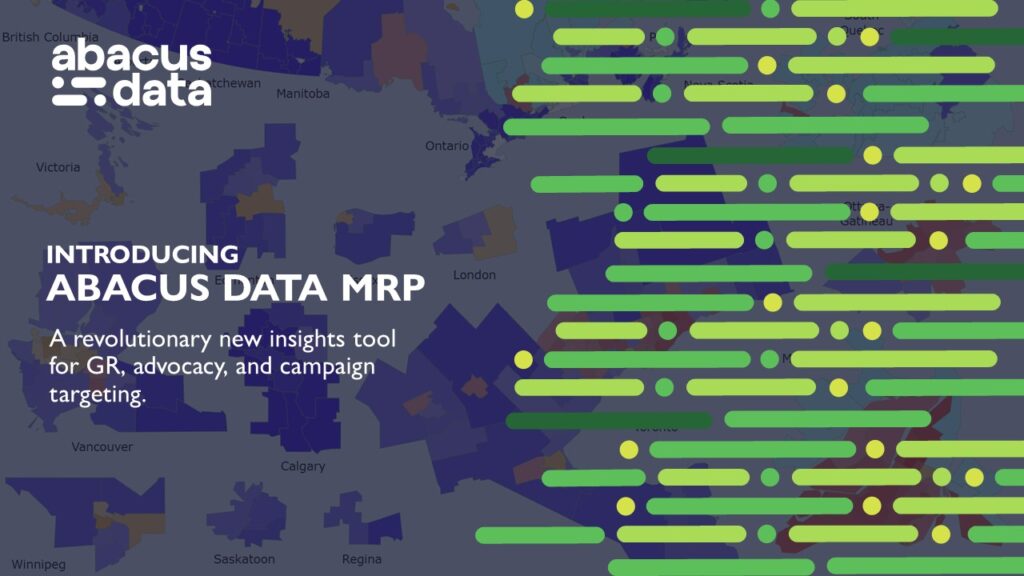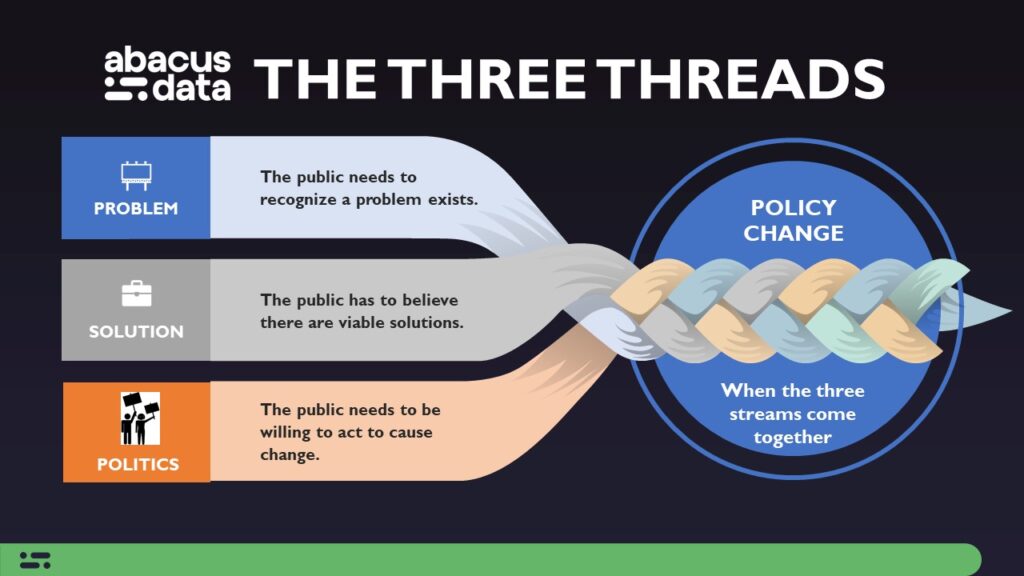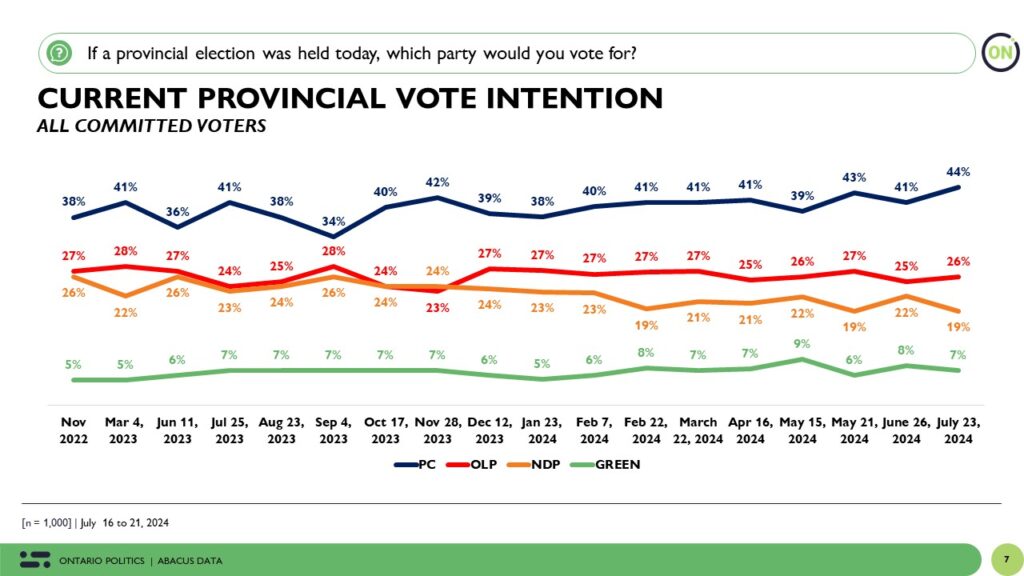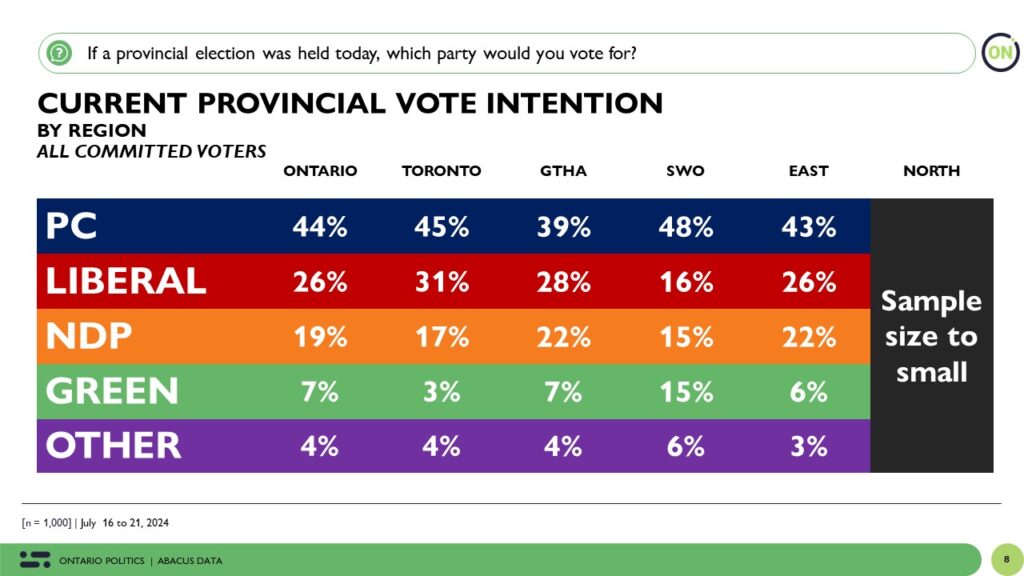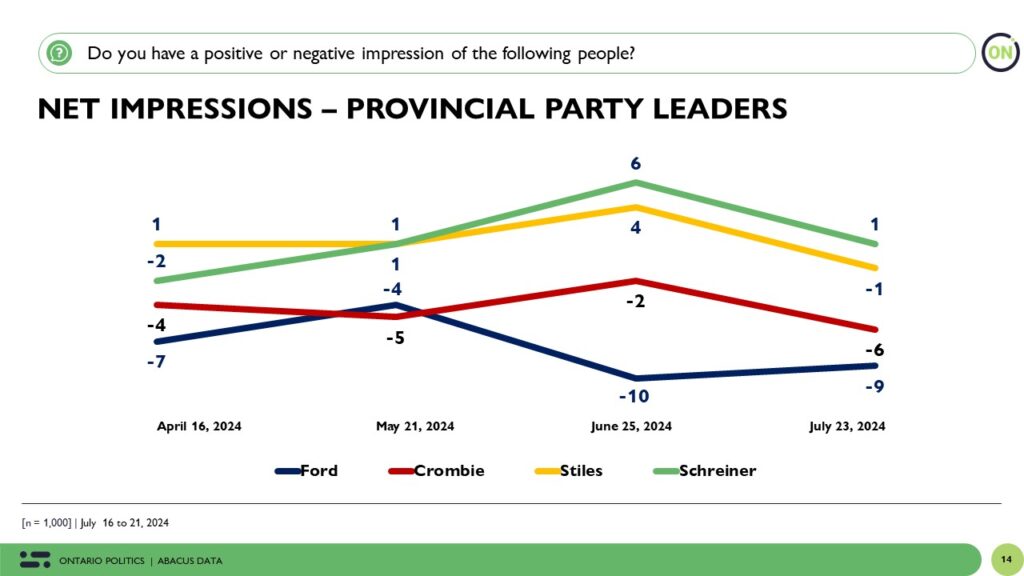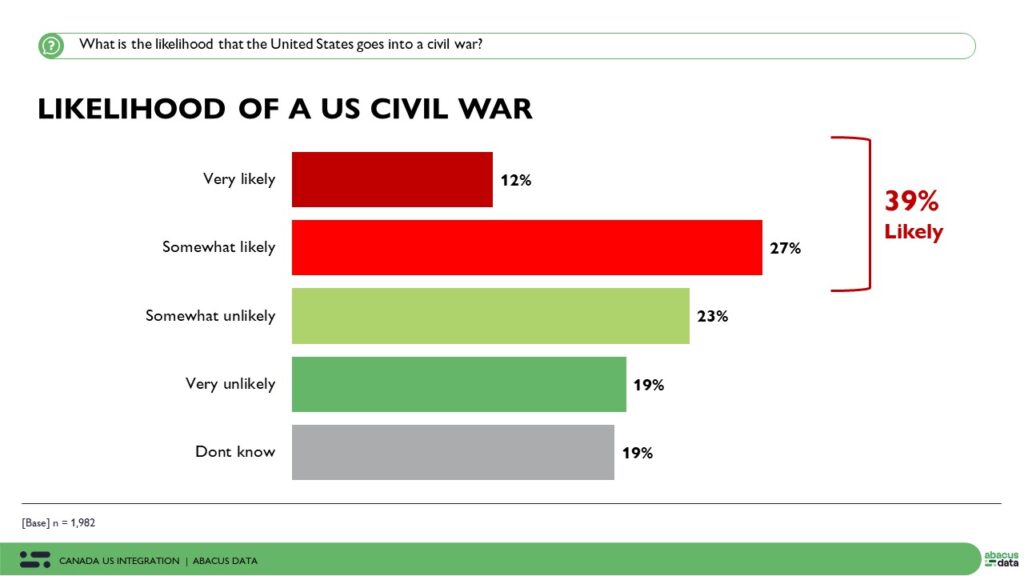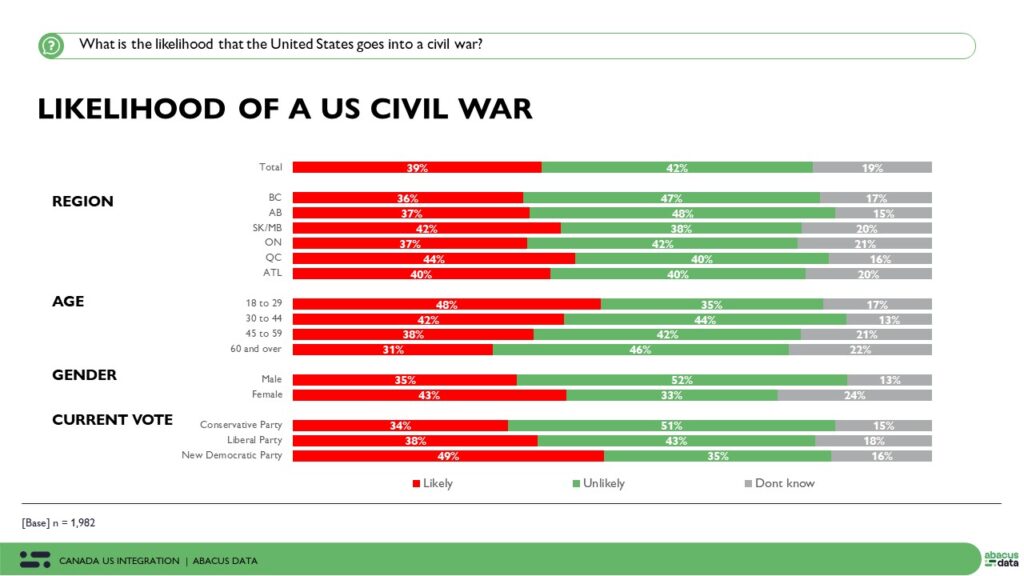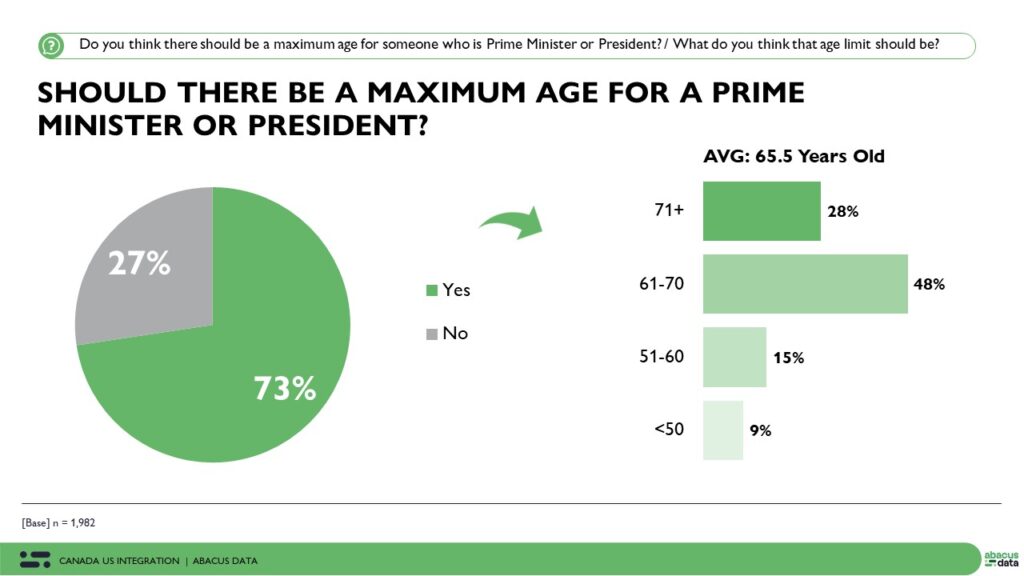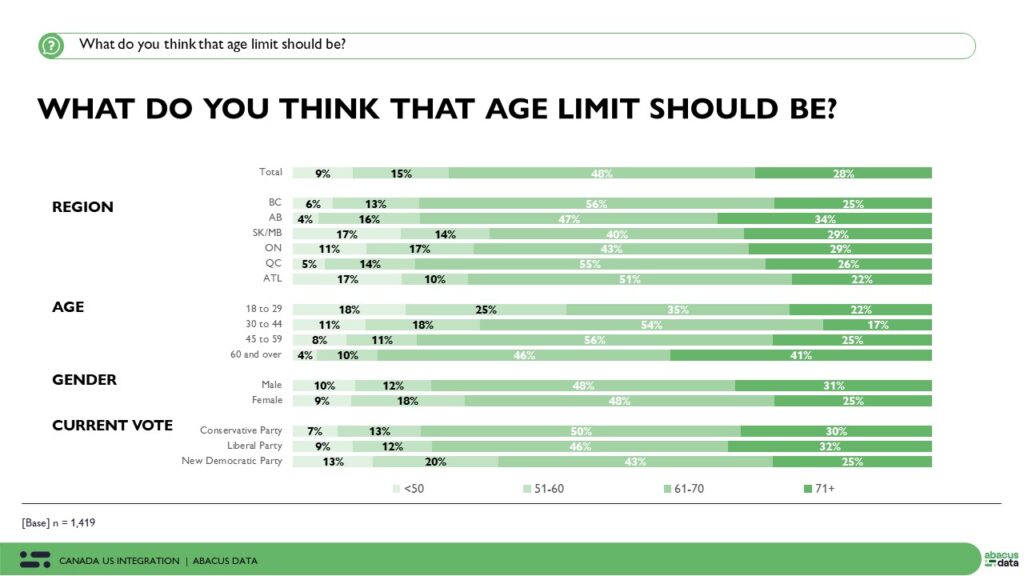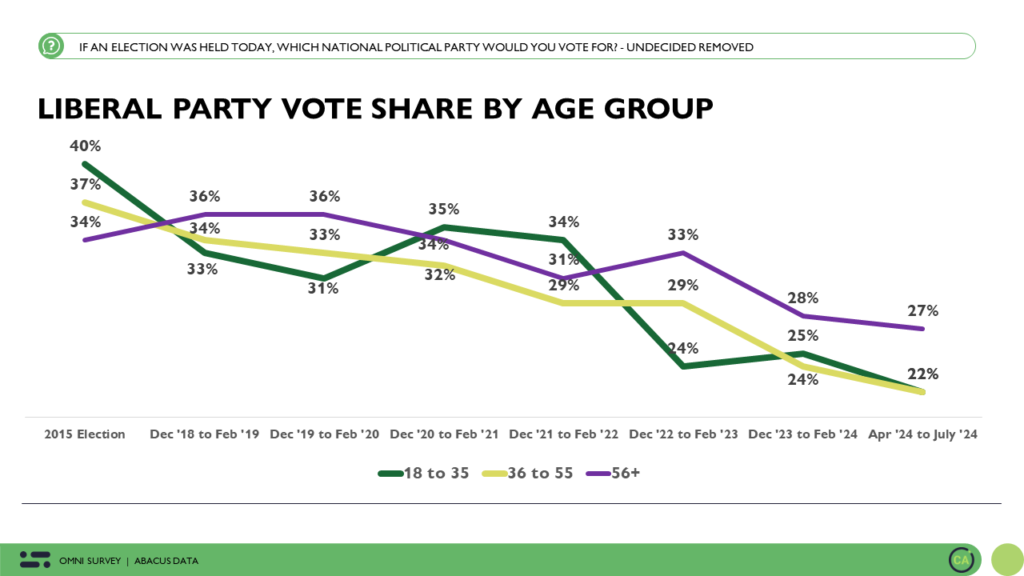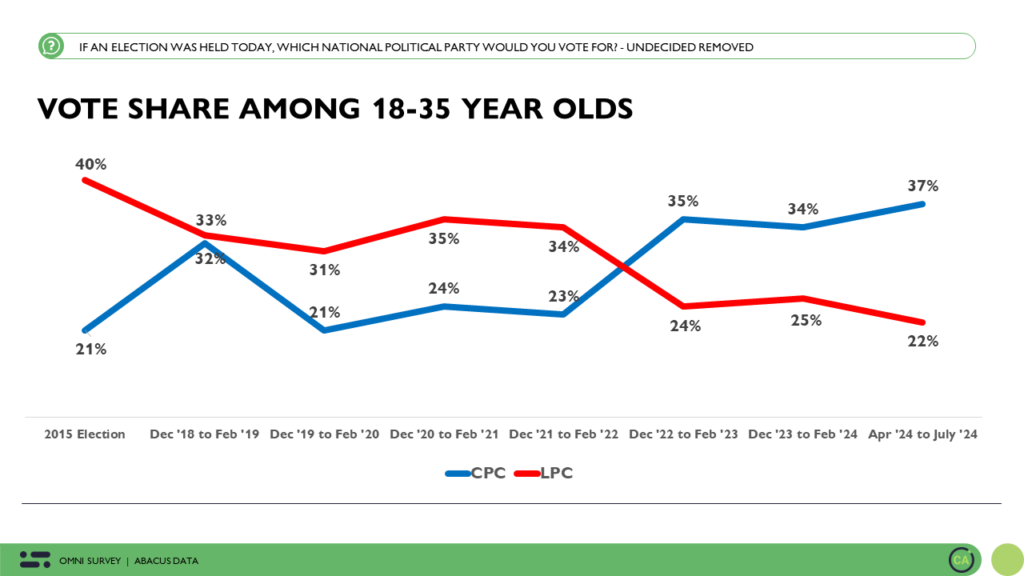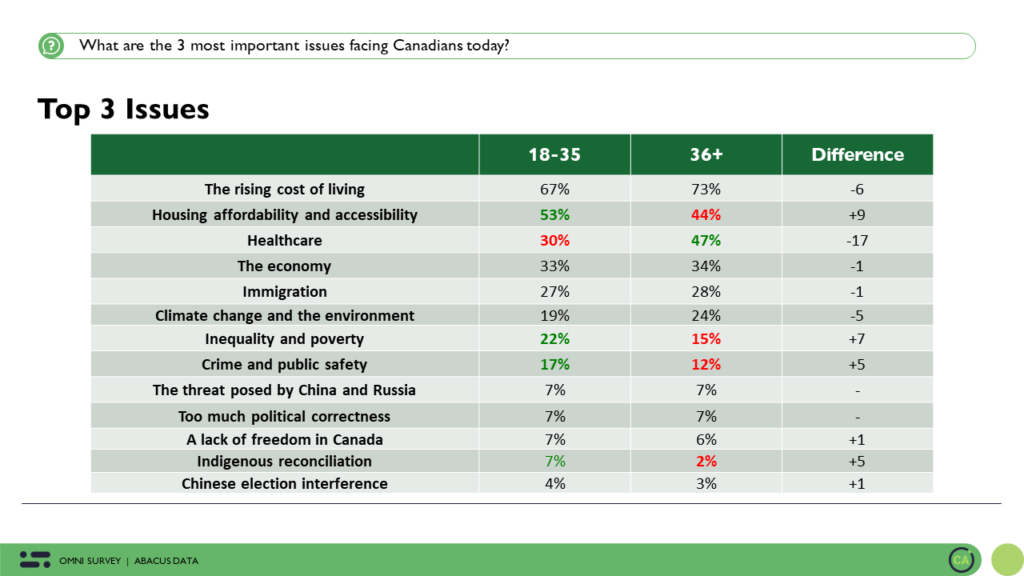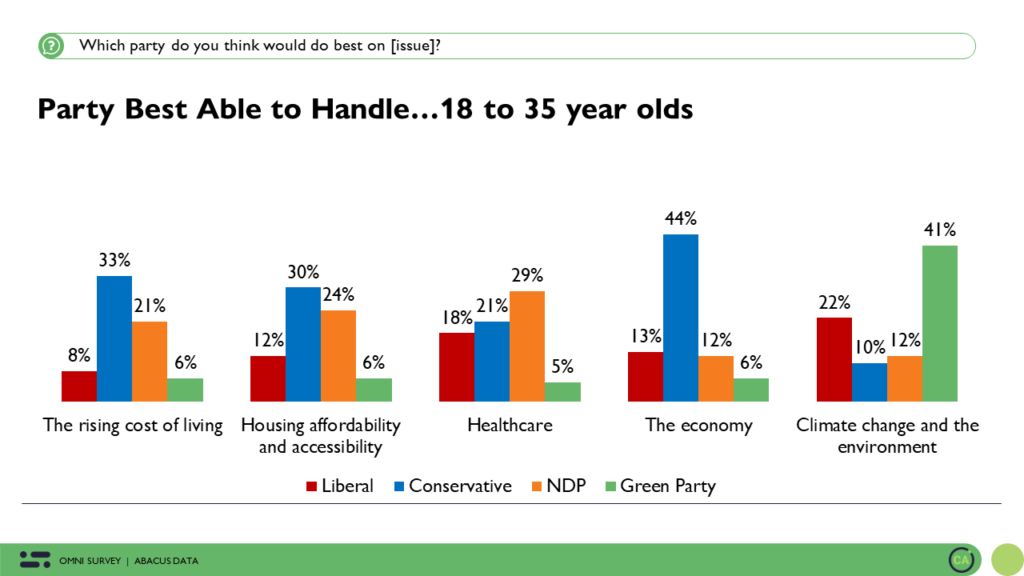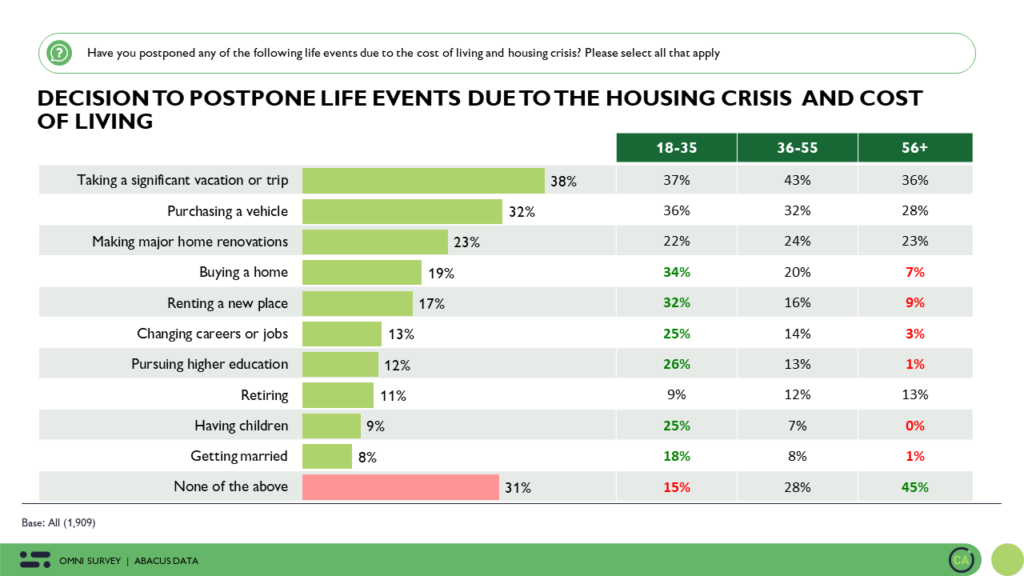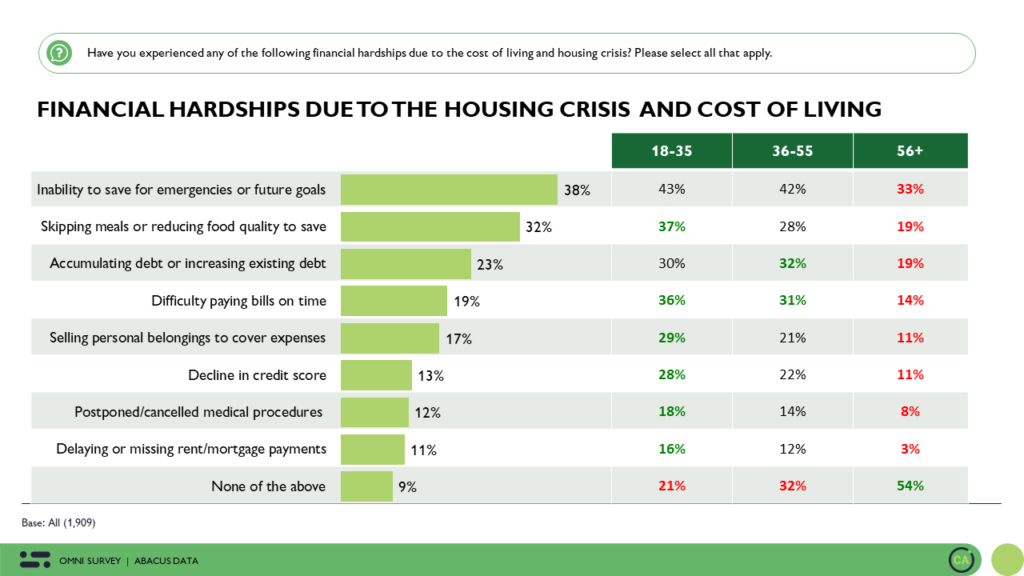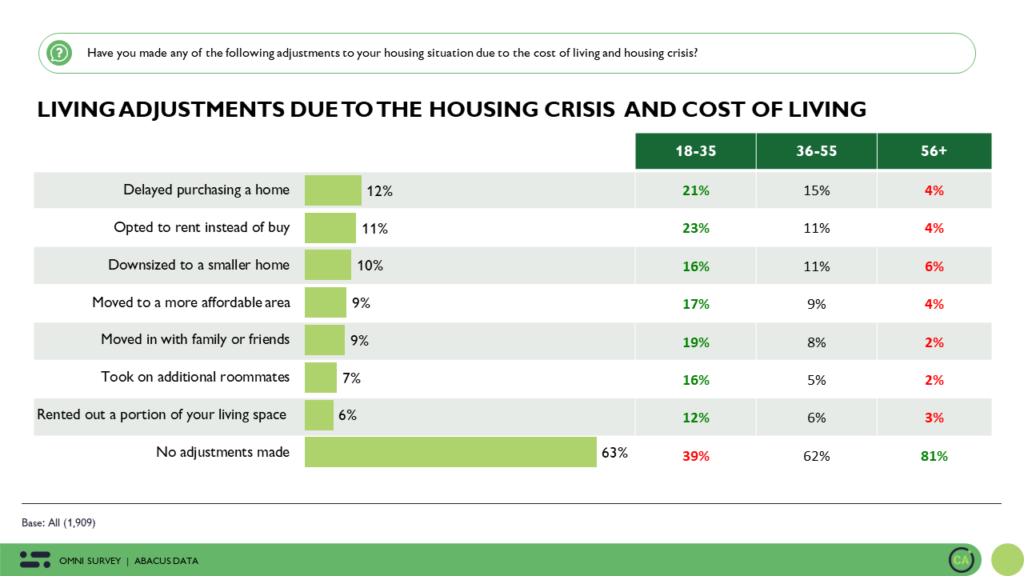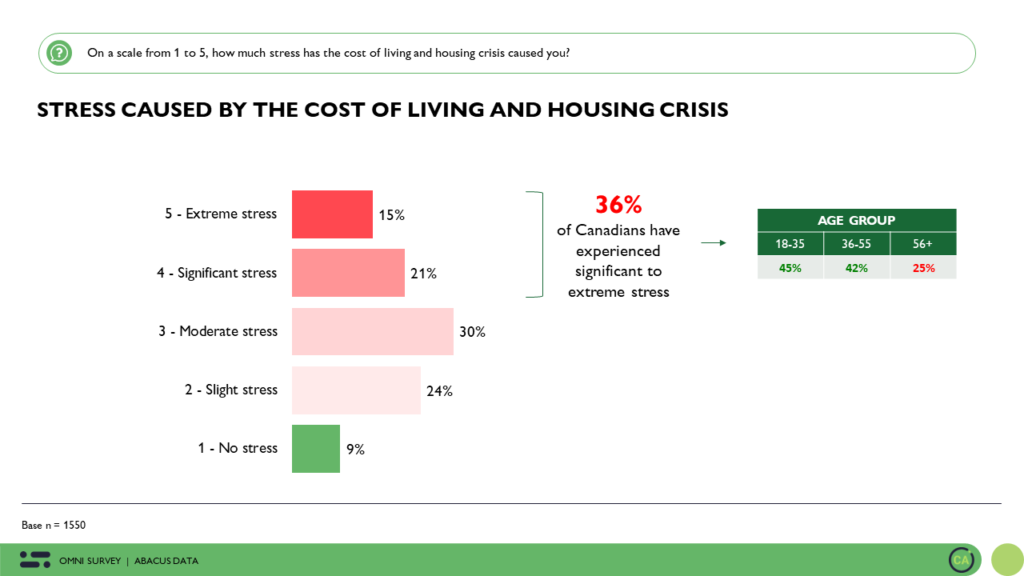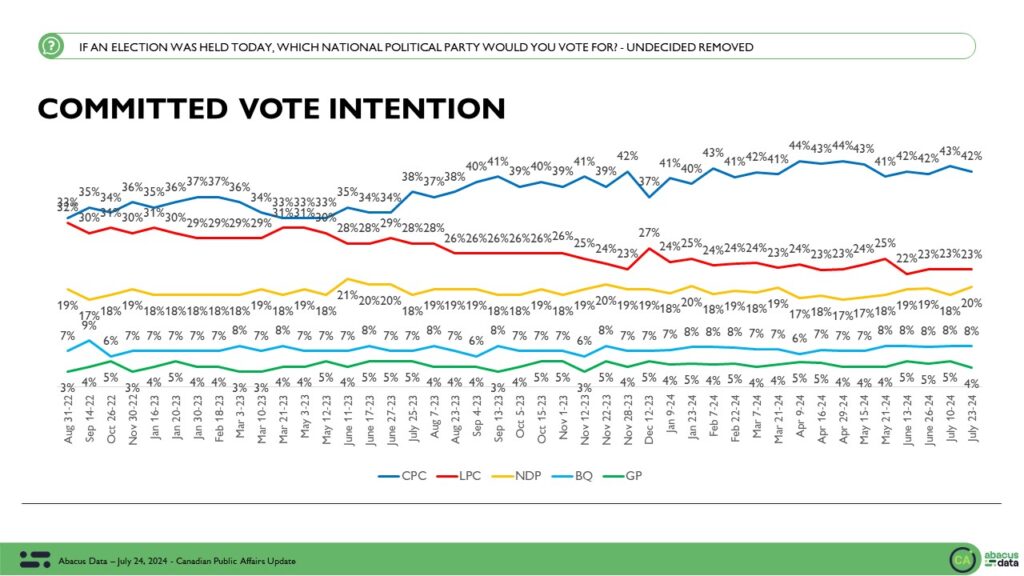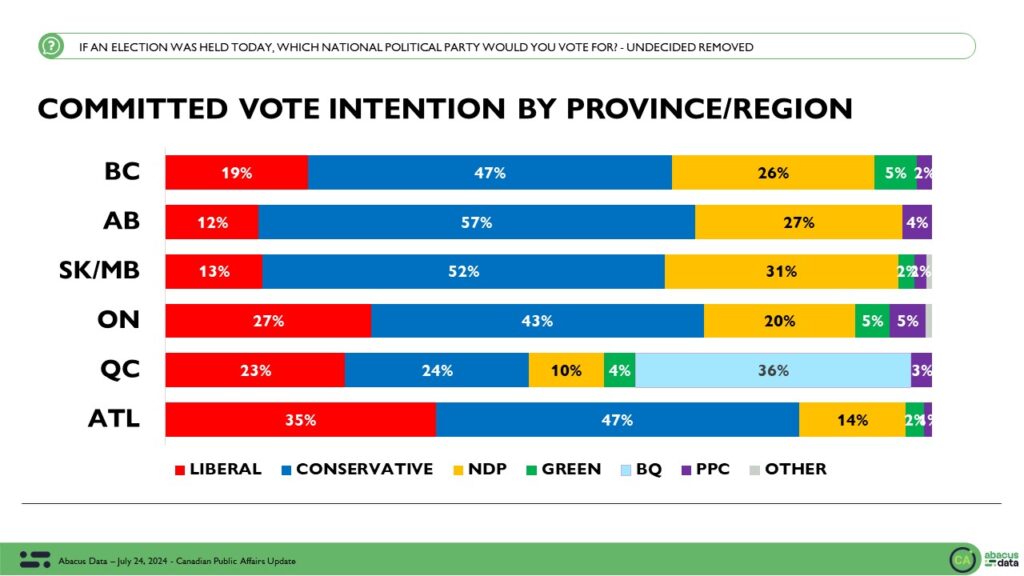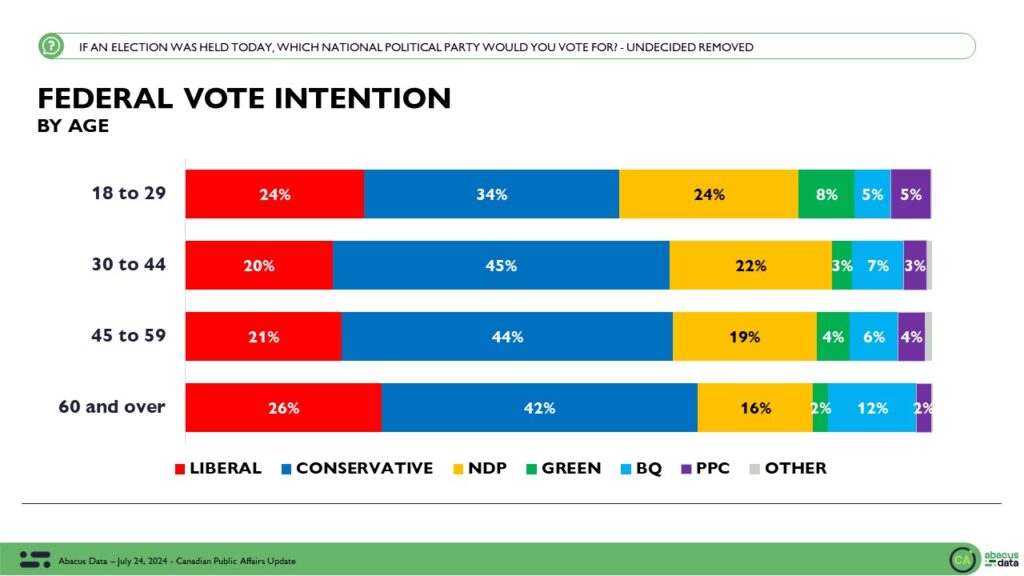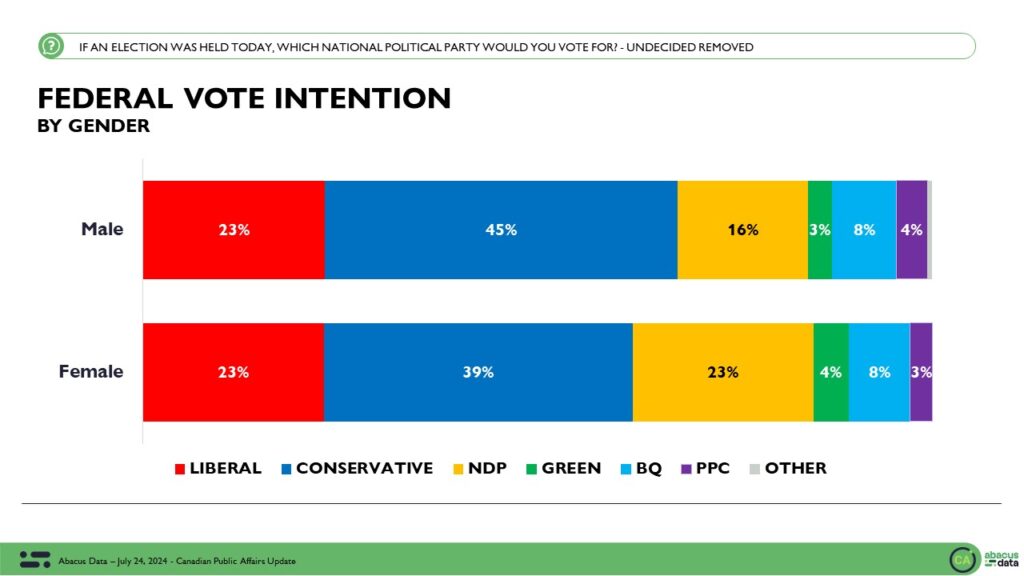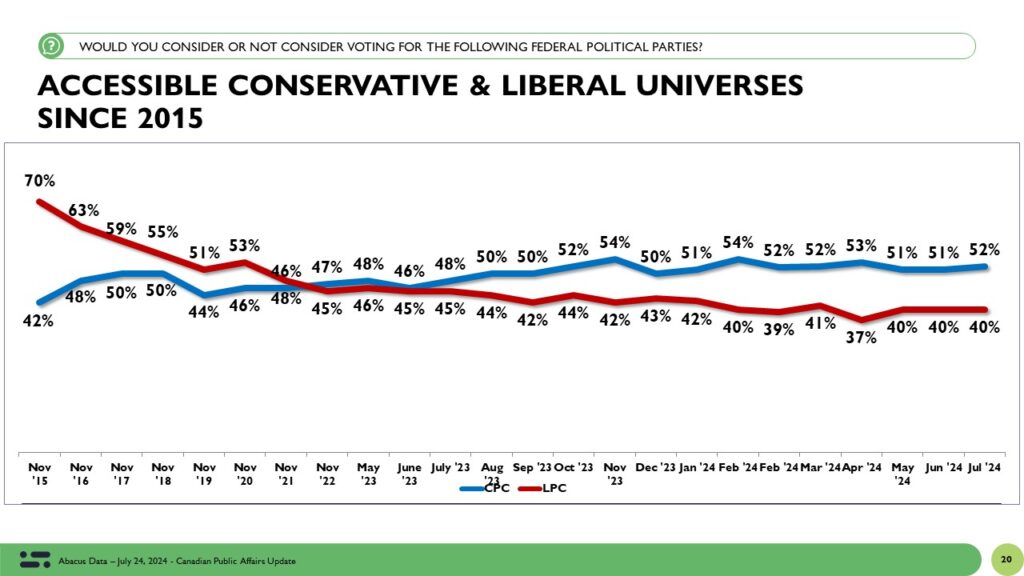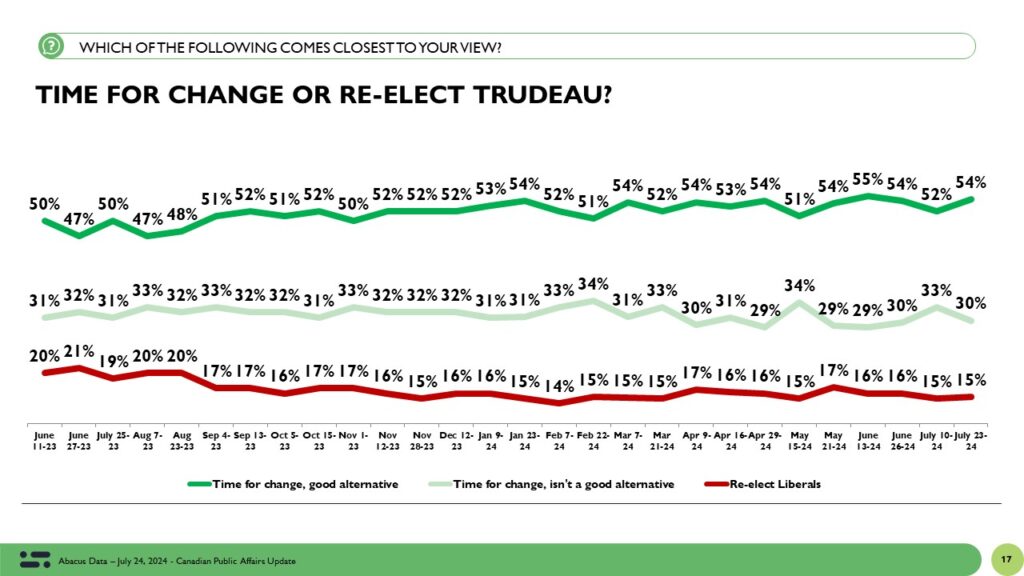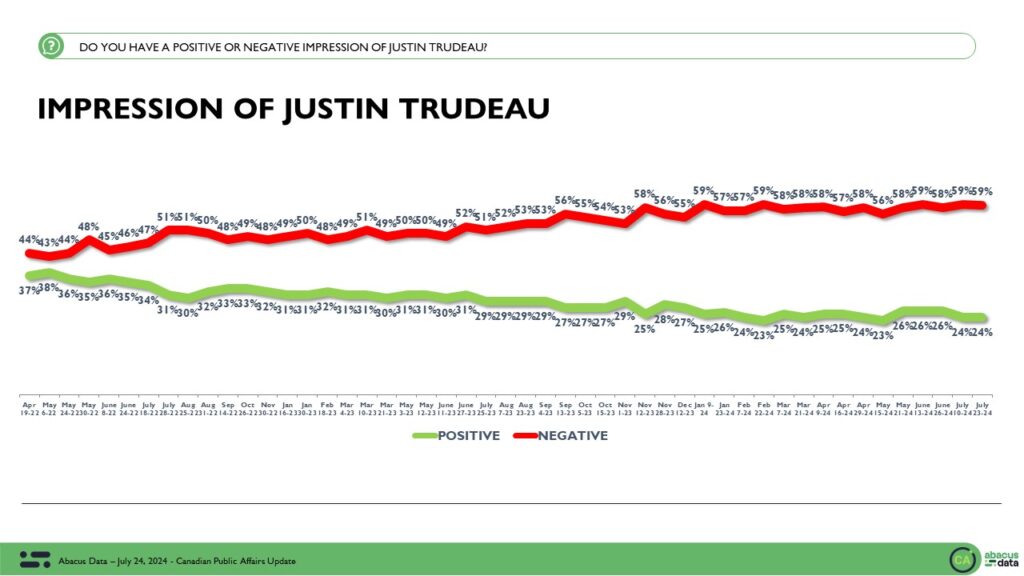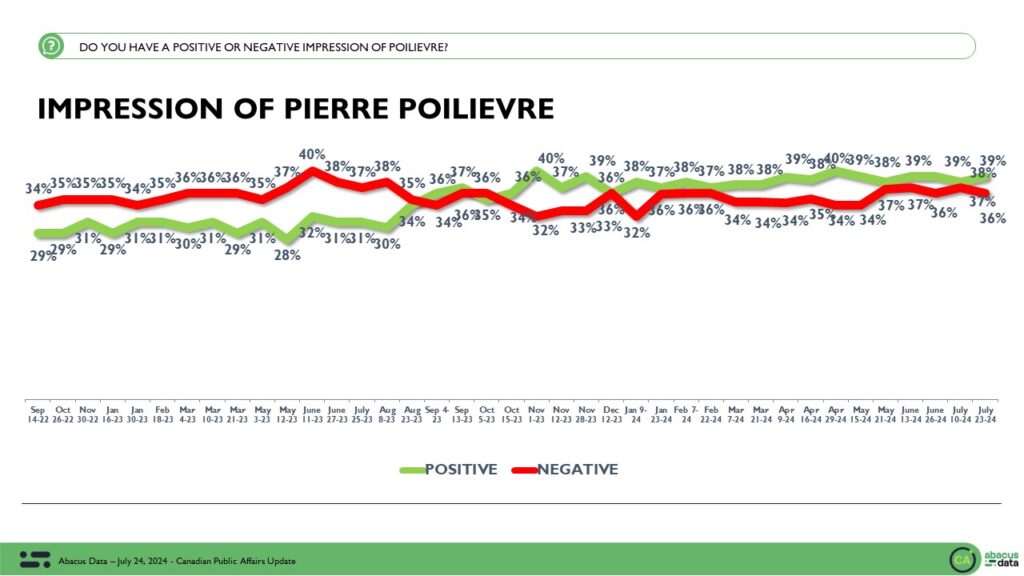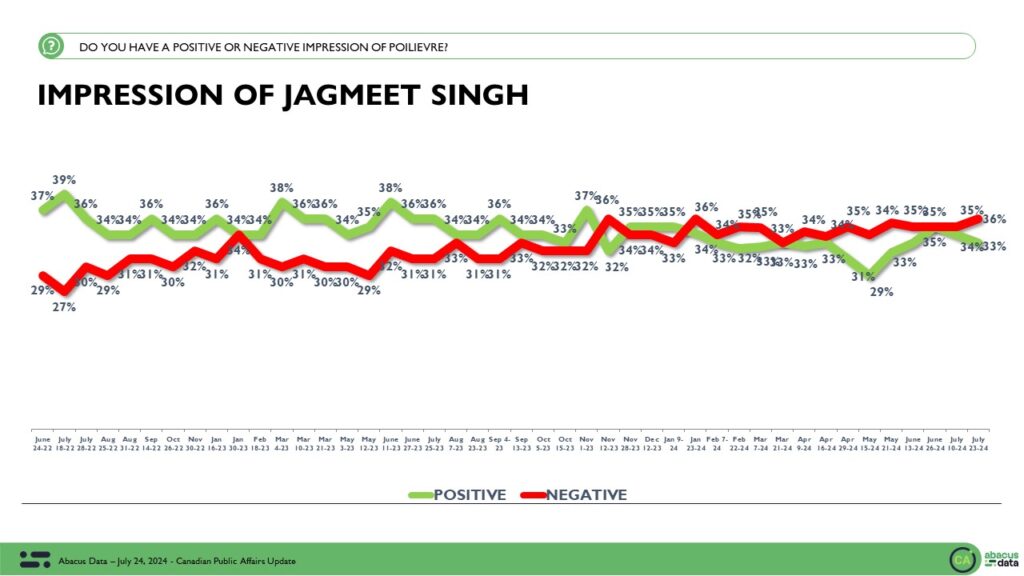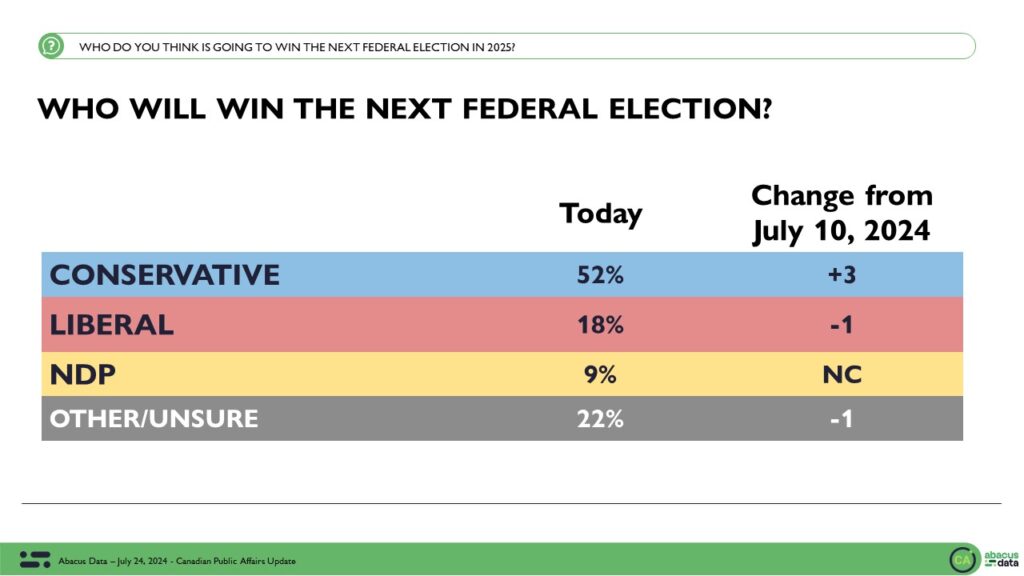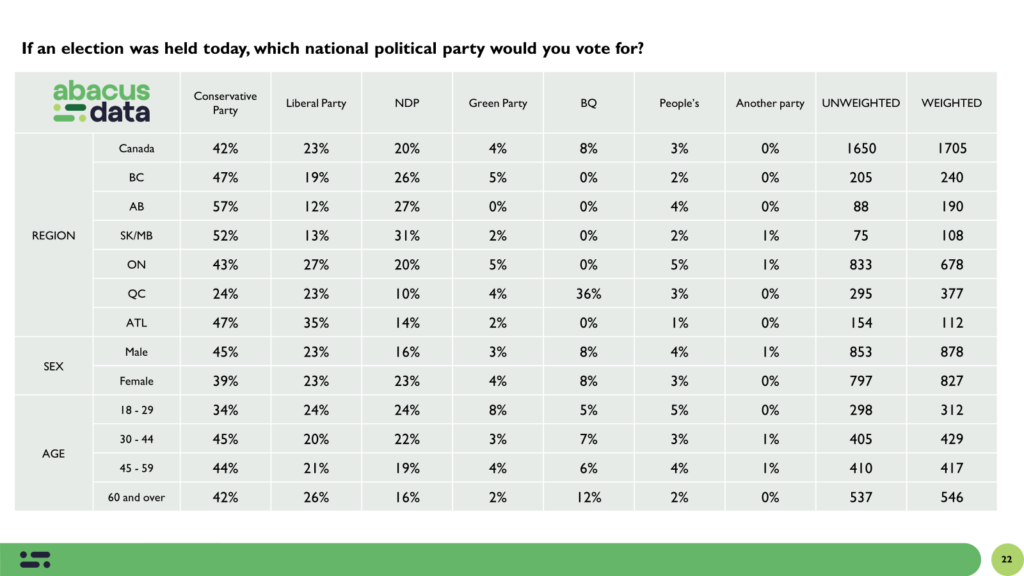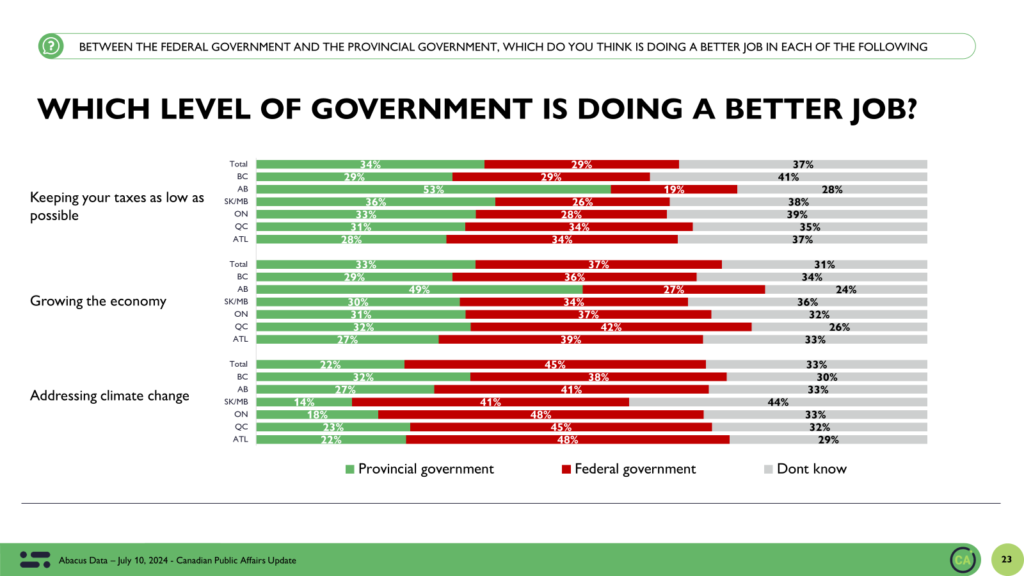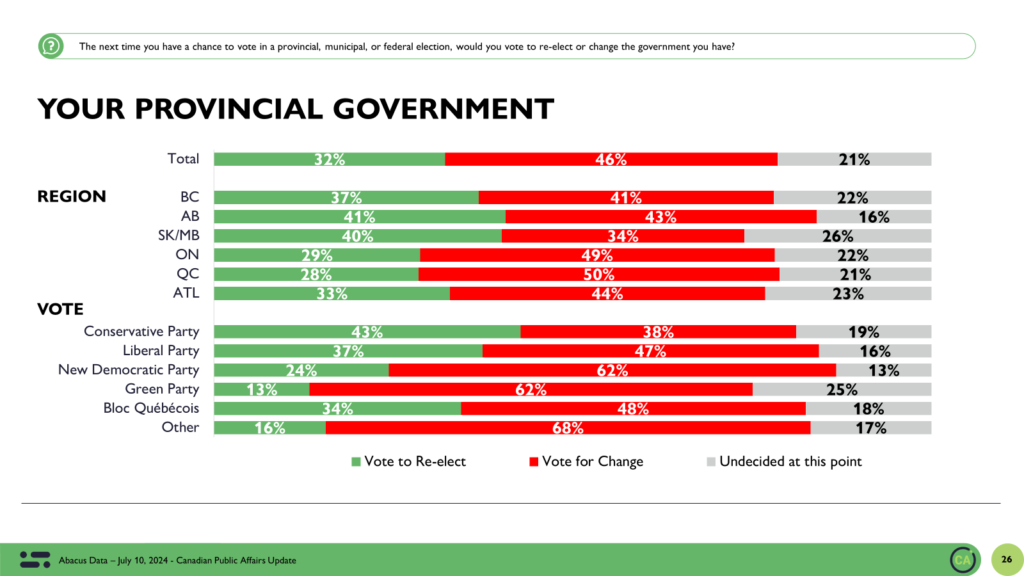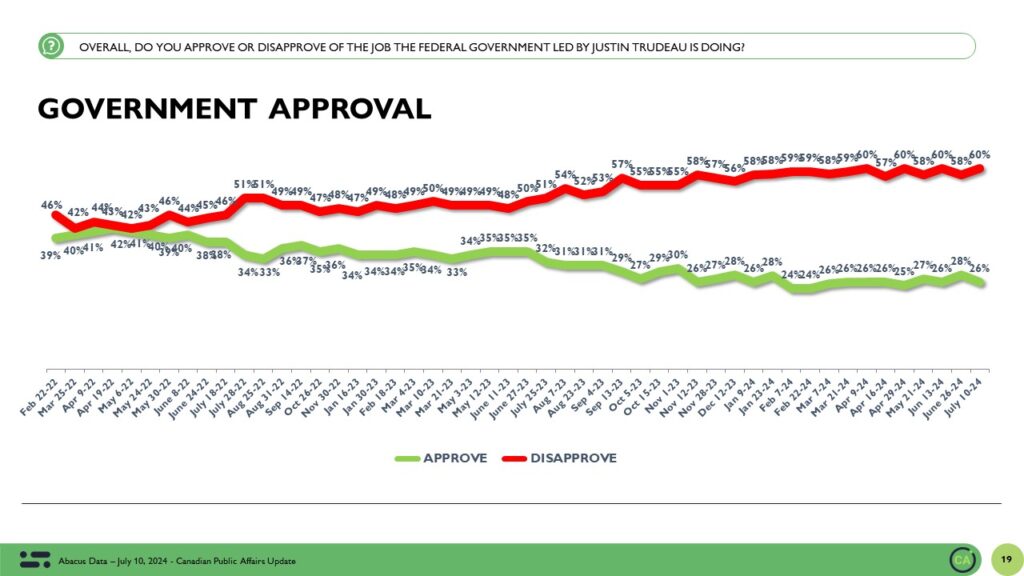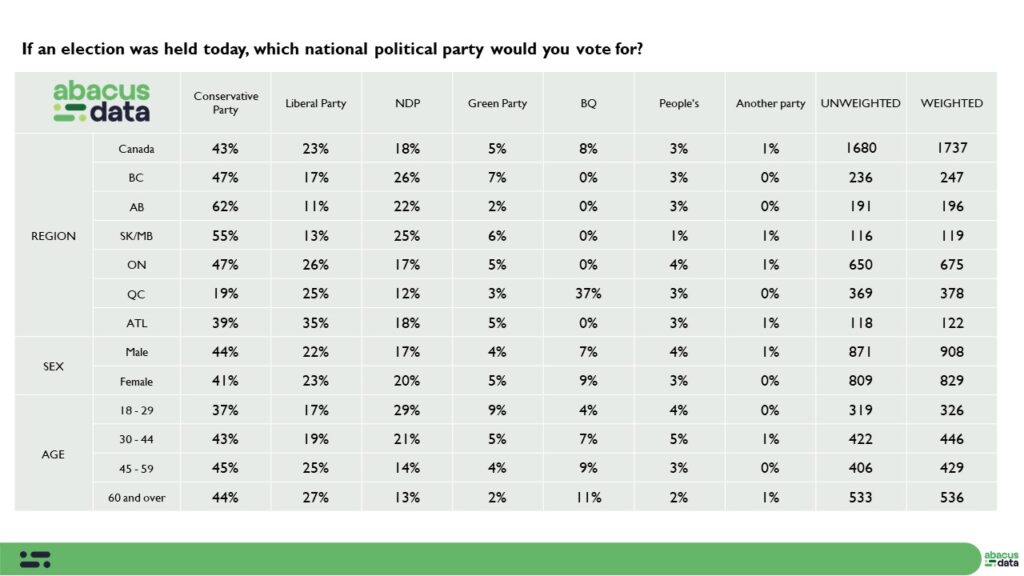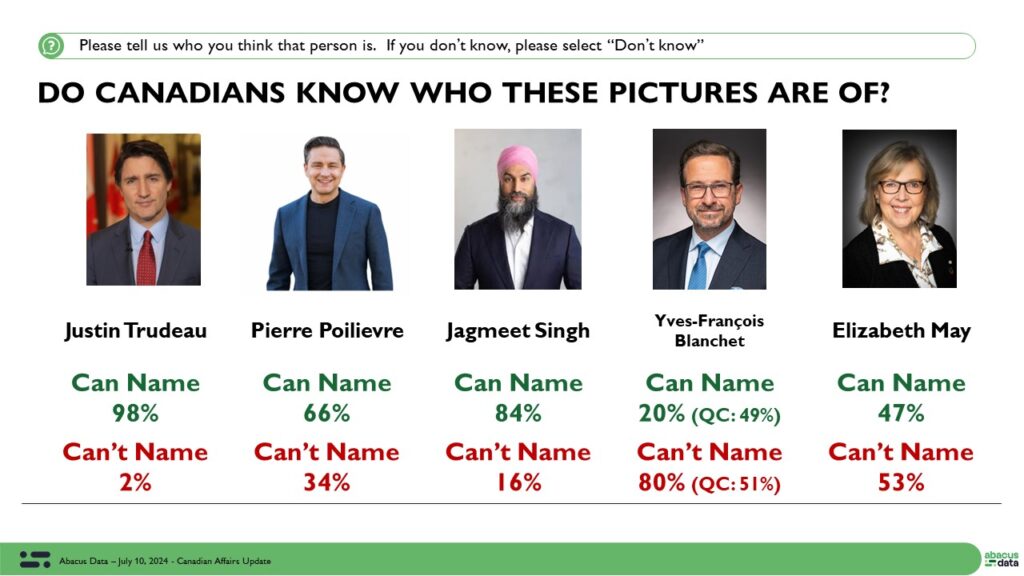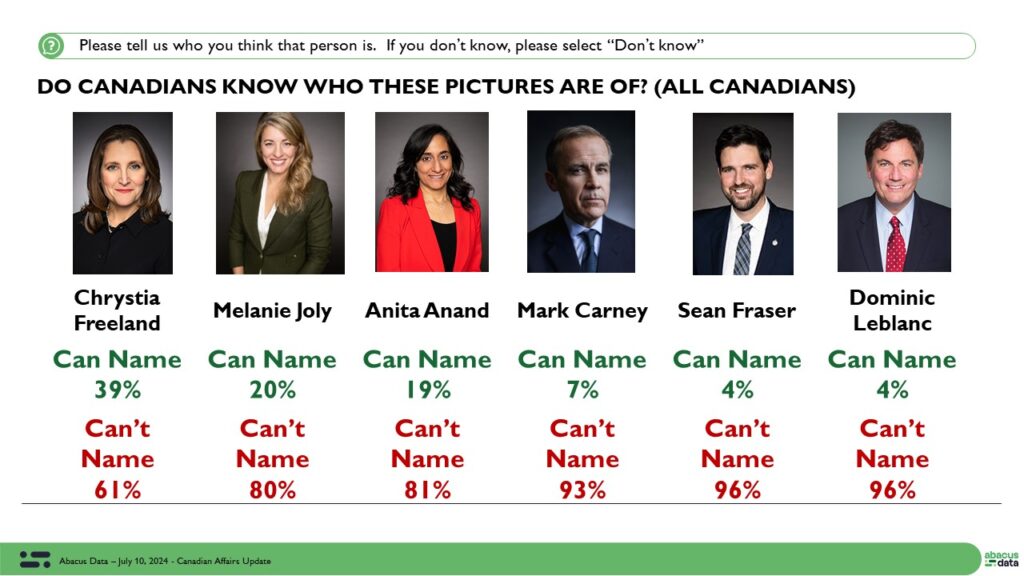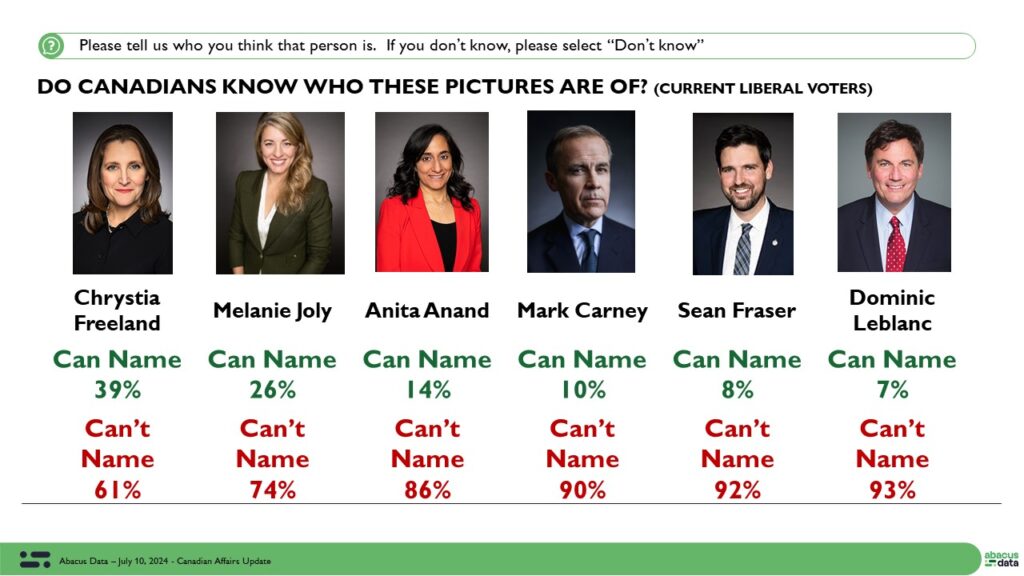BC NDP leads by 5 over BC Conservatives as Falcon’s tax cut pledge fails to deliver bounce so far.
From August 14 to 16, 2024, Abacus Data conducted a survey of 1,000 eligible voters in British Columbia exploring their views on provincial politics and government. This survey was a standalone survey in which questions about provincial politics came before any questions about federal politics. Stay tuned for results on the federal political questions.
The survey was also done entirely after BC United Leader Kevin Falcon announced that if elected, his party would cut provincial income taxes.
Current Provincial Vote Intention
If an election was held at the time of the survey, the BC NDP would likely win another majority government although the 18-point lead we measured in November of 2023 remains much tighter – at only 5 percentage over the BC Conservatives.
The BC NDP has the support of 42% of committed voters, a two point increase from May. The BC Conservatives are second with 37%, up 3 while the official opposition BC United is at 10%, down 3. The BC Greens are at 10%, changed from our last survey.

Among those British Columbians who say they are certain to vote, the BC NDP lead grows to 7-points with the NDP at 45%, the BC Conservatives at 38%, BC United at 9% and the Greens at 7%

Regionally, the BC NDP is ahead by 9-points in Metro Vancouver, by 9-points on Vancouver Island while the BC Conservatives are ahead by 11 in the Interior and Northern regions of the province.

The BC NDP continues to lead by 15 points among those aged 45 and over while trailing among those under 44. In fact, among those 60+, the BC NDP is ahead by 20-points, and that lead has grown, while millennials favour the BC Conservatives by 11-points (a gap that has also grown).

The BC NDP leads by 17 among women (47% to 30% for the BC Conservatives) and trails the BC Conservatives by 6-points among men. The gender gap in voting intentions has grown since our last survey in May.

When we compare current provincial vote intentions with reported vote in the 2022 provincial election, we find that the BC NDP has held onto 73% of its current vote with 21% of past NDP voters now saying they would vote for the BC Conservatives.
50% of past BC Liberal voters are voting BC Conservative now while 28% are sticking with BC United (formerly the BC Liberals). 1 in 5 BC Liberal voters are now voting NDP.

Has the Context Changed?
British Columbians remain somewhat more positive about the direction of the province than Canadians feel about the direction of the country and the mood is pretty much where things were in May.
29% of British Columbians feel the province is headed in the right direction. Half think its off on the wrong track.

Economic evaluations remain pretty statics from May. 17% describe the BC economy as excellent or good, up 1 from May while half feel it is poor or terrible, unchanged from the spring.

When we ask about incomes relative to the cost of living, we find some improvement in perceptions. Those who say they are falling behind are still the majority (61%) but is down 4 points since May.


Since May, we see an increase in those who definitely want to see a change in government. Today, 54% say they definitely want change, up 7-points since May while those in the middle categories dropped by 5 points.
1 in 5 British Columbians definitely want to see David Eby and the NDP re-elected, down a marginal one point since May.

In terms of leader impressions, Premier Eby continues to be the most popular provincial party leader. 39% have a positive impression (down 1 from May) while 26% have a negative view (down 1). for a net score of +13.
In comparison, BC United Leader Kevin Falcon is net -21 (worse than in May) with 16% positive and 37% negative. The income tax cut announcement doesn’t seem to have made much difference in improving impressions of Mr. Falcon, at least when compared to our last survey.
BC Greens Leader Sonia Furstenau is +2 with 23% positive and 22% negative while BC Conservative Leader John Rustad is +1 with 30% positive (up 5) and 29% negative (unchanged) for an overall slight improvement in his personal image.

When we ask people to rate the three issues facing the province, the cost of living, housing, and healthcare continue to be the top three issues. And they are the top three issues for pretty much all party supporters.
But we have seen a 4-point increase in those rating taxes as a top issue. Note, this question was asked before any questions about the BC United tax cut promise (see results below).
NDP supporters are more likely to rate housing, healthcare, and climate change as a top issue while Conservative supporters are more likely to rate the cost of living, drug addiction, taxes, and the economy as a top issue.

When we ask those who rated an issue in their top 3 which party is best able to handle it, we find the BC Conservatives with a slight 4-point advantage over the NDP on the cost of living. The NDP leads by 13-points on housing, 12-points on healthcare, and 17-points on poverty and homelessness.
The BC Conservatives have a 17-point advantage among those who rate drug addiction as a top issue, and a 10-point lead on taxes.
Of note, despite the tax cut pledge, only 10% of those who care about taxes say BC United is better able to handle the issue, 14-points behind the NDP and 24-points behind the Conservatives.
On climate and the environment, 46% of those who care most about that issue think the BC Greens are best able to handle the issue followed by the BC NDP at 27%.
Awareness and Reaction to the BC United Tax Cut Pledge
In this survey, we also asked several questions about the income tax promise made by BC United Leader Kevin Falcon on Tuesday, August 13.
Within 3 days of the announcement, about 4 in 10 British Columbians say they are aware of the announcement. Awareness was higher among those who would vote BC United today (53%). This level of awareness is pretty high based on our experience.

But support for BC United is only marginally higher among those aware of the promise than those unaware suggesting the announcement has had little impact so far and if awareness increases, it may not change voting intentions.

This is despite the fact that most British Columbians think the promise is a good idea (60%) compared with 24% who think it’s a bad idea. Even a half of NDP supporters think the tax cut idea is a good idea.

However, when we tell respondents that the tax cut proposal would cost about $5.4 billion and Mr. Falcon stated this cost would be covered by finding and eliminating government waste, many British Columbians were skeptical.
Only 9% of BCers think it is definitely possible to implement the proposed tax cut without cutting services or raising other fees or taxes. Another 28% think it’s probably possible. Half of British Columbians believe it’s probably or definitely not possible to achieve, including half of BC Conservative supporters and 1 in 3 BC United supporters.

Will the tax cut promise move votes? So far, the evidence in this survey is that it hasn’t. BC United has a lower vote share in this survey than in our previous May survey.
However, when we ask people whether the promise makes them more or less likely to vote for BC United, 1 in 4 say yes. But far more say they are either less likely to vote BC United (15%) or the promise won’t impact their vote (45%).
Those who aren’t currently supporting BC United and say they are more likely to support BC United because of the tax cut promise represent 21% of the electorate. That’s a sizeable portion.
In 2022, 31% of this group voted NDP, 24% BC Liberal, 4% Green, 5% for another party and 35% didn’t vote.
So although the promise hasn’t yet had any impact on BC United vote share or feelings towards Kevin Falcon, it still may.

The Upshot
According to Abacus Data founder, Chair & CEO, David Coletto:As we head towards October’s provincial election in BC, the BC NDP remain the favourites to win thanks to their advantage in Metro Vancouver and on Vancouver Island and the party’s lead among those most likely to vote.
The split on the centre-right continues to help the BC NDP, even as the BC Green vote holding together, makes the race tigher.
If voters perceive the election to be much closer, especially as move towards Election Day, we should expect even more consolidation between the two parties people expect to be in a winning position.
Premier Eby continues to have a net positive impression despite an intensifying desire for change. Conservative Leader John Rustad has slightly higher negatives, but he too has a relatively good personal image, especially when compared to BC United leader Kevin Falcon.
Mr. Falcon’s bold pledge to cut provincial income taxes has yet to change minds about him or a willingness to vote for his party. In May, 36% of British Columbians said they were open to voting BC United. Today, that number is largely unchanged at 35%. So far, this so-called “Hail Mary” play has yet to bear any political fruit for official opposition leader.
Methodology
The survey was conducted with 1,000 eligible voters living in British Columbia from August 14 to 16, 2024. A random sample of panelists were invited to complete the survey from a set of partner panels based on the Lucid exchange platform. These partners are typically double opt-in survey panels, blended to manage out potential skews in the data from a single source.
The margin of error for a comparable probability-based random sample of the same size is +/- 3.1%, 19 times out of 20.
The data were weighted according to census data to ensure that the sample matched BC’s population according to age, gender, educational attainment, and region. Totals may not add up to 100 due to rounding.
This survey was paid for by Abacus Data Inc.
Abacus Data follows the CRIC Public Opinion Research Standards and Disclosure Requirements that can be found here: https://canadianresearchinsightscouncil.ca/standards/
ABOUT ABACUS DATA
We are the only research and strategy firm that helps organizations respond to the disruptive risks and opportunities in a world where demographics and technology are changing more quickly than ever.
We are an innovative, fast-growing public opinion and marketing research consultancy. We use the latest technology, sound science, and deep experience to generate top-flight research-based advice to our clients. We offer global research capacity with a strong focus on customer service, attention to detail, and exceptional value.
We were one of the most accurate pollsters conducting research during the 2021 Canadian election following up on our outstanding record in 2019.
Contact us with any questions.
Find out more about how we can help your organization by downloading our corporate profile and service offering.



